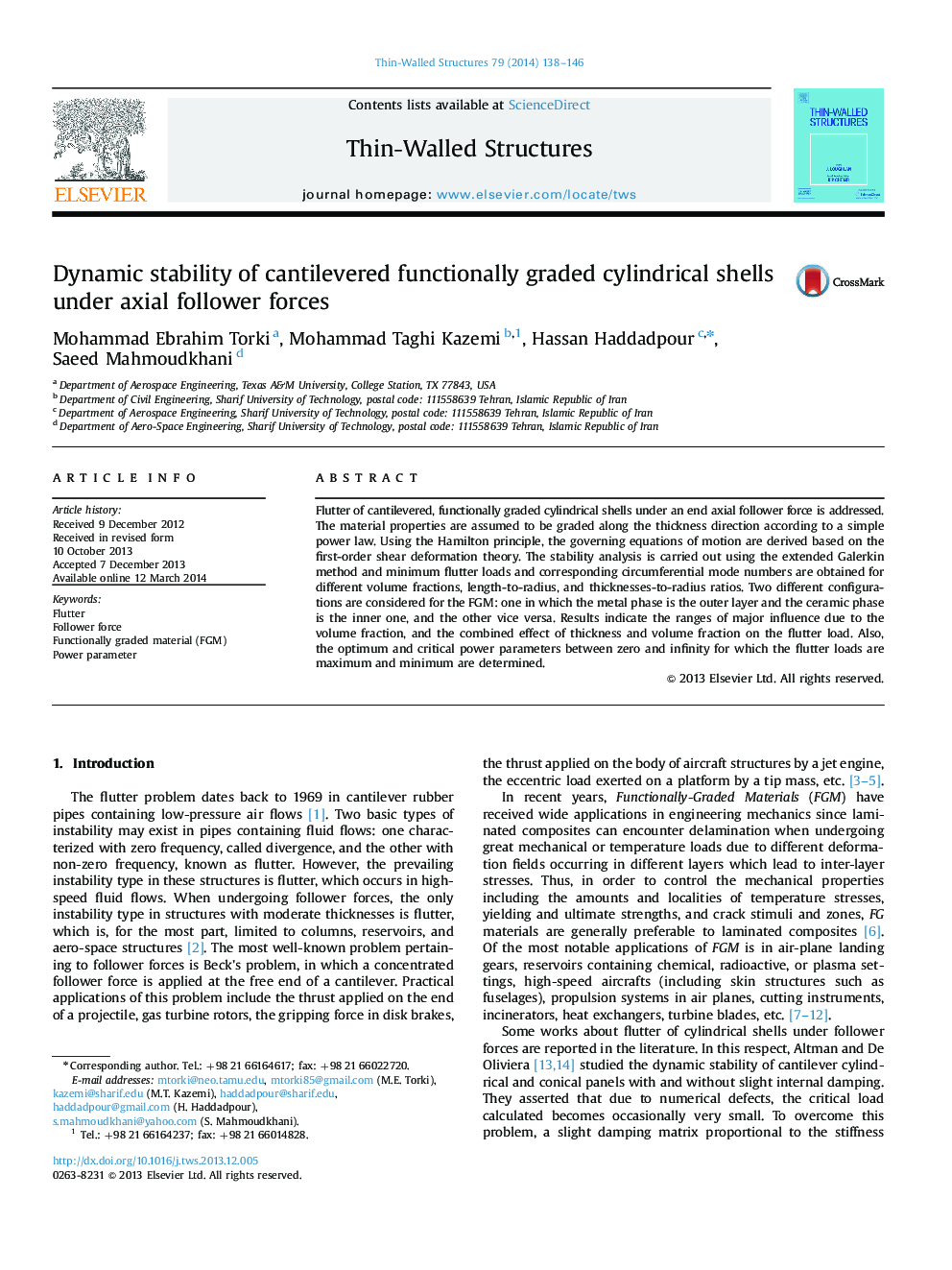| Article ID | Journal | Published Year | Pages | File Type |
|---|---|---|---|---|
| 308988 | Thin-Walled Structures | 2014 | 9 Pages |
•The article addresses the Flutter of cantilevered, functionally graded cylindrical shells under an axial follower force.•The governing equations were derived using the first-order shear theory and a power layer-wise distribution law for the material properties.•The Galerkin method, using polynomial mode shapes, was exerted to evaluate minimum flutter loads by solving for the eigenvalue problem.•Combined effects of thickness and volume fraction were studied, and power parameters inducing maximum and minimum flutter loads were determined.
Flutter of cantilevered, functionally graded cylindrical shells under an end axial follower force is addressed. The material properties are assumed to be graded along the thickness direction according to a simple power law. Using the Hamilton principle, the governing equations of motion are derived based on the first-order shear deformation theory. The stability analysis is carried out using the extended Galerkin method and minimum flutter loads and corresponding circumferential mode numbers are obtained for different volume fractions, length-to-radius, and thicknesses-to-radius ratios. Two different configurations are considered for the FGM: one in which the metal phase is the outer layer and the ceramic phase is the inner one, and the other vice versa. Results indicate the ranges of major influence due to the volume fraction, and the combined effect of thickness and volume fraction on the flutter load. Also, the optimum and critical power parameters between zero and infinity for which the flutter loads are maximum and minimum are determined.
